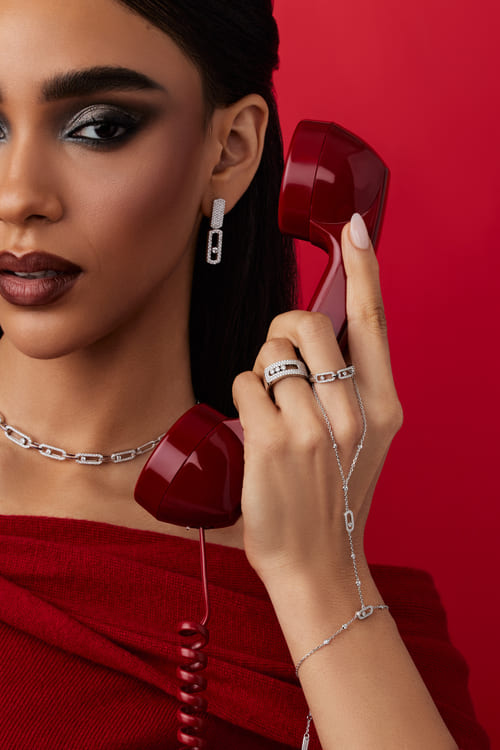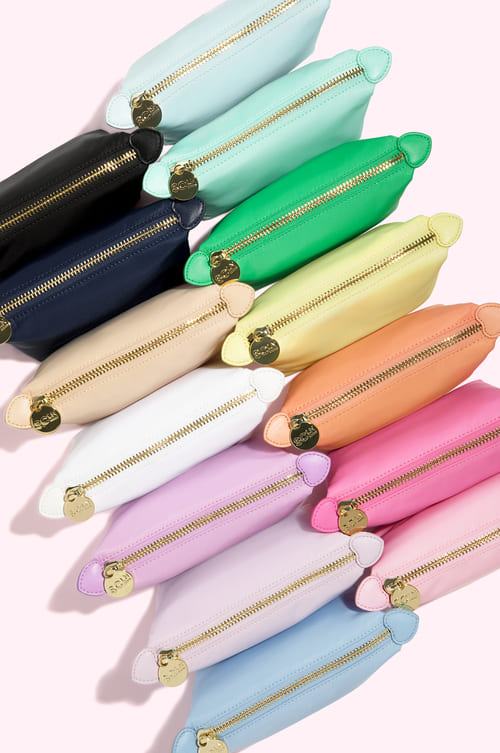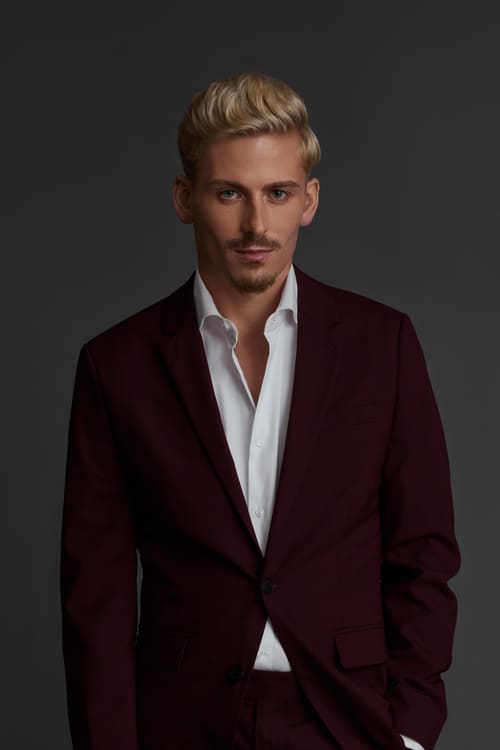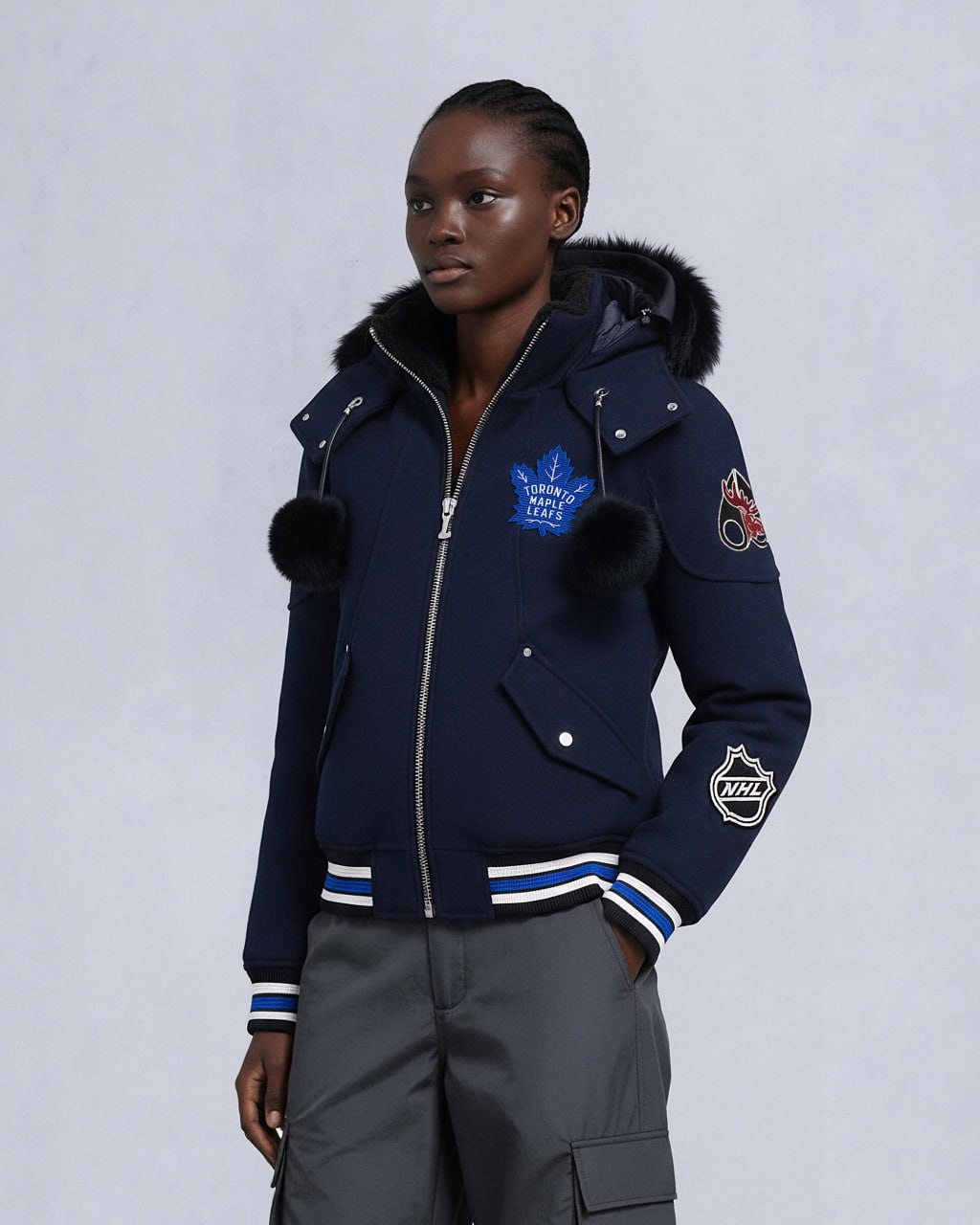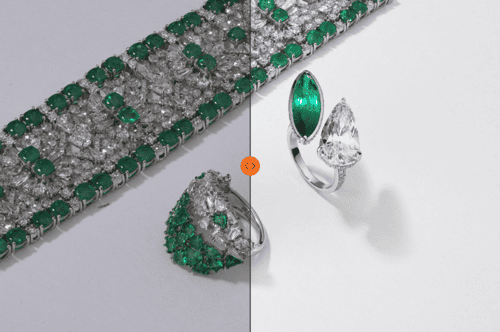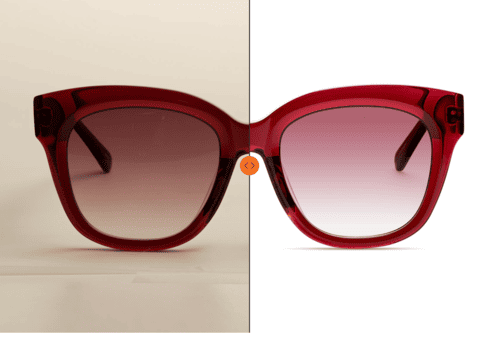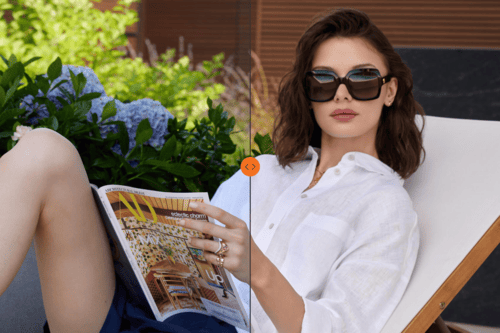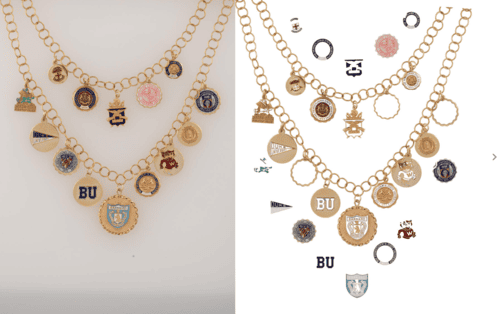8 Inspiring Visual Marketing Strategies from Leading Fashion Brands

What is Visual Marketing for Fashion Brands?
As audiences increasingly prioritize engaging, authentic experiences, the ability to communicate a brand’s ethos and identity through compelling visuals is essential.
At its core, visual marketing harnesses the power of images, videos, and graphics to craft narratives that resonate with consumers. This approach not only amplifies message retention but also builds emotional connections and facilitates purchase decisions — a critical edge in the aesthetics-driven fashion industry.
The foundation of impactful visual marketing lies in strategic content creation and precise distribution. Brands must prioritize understanding their audience’s preferences, the nuances of various platforms, and their overarching messaging. When executed thoughtfully, visuals don’t just attract attention — they become a natural extension of the brand’s ambitions.
Fashion, inherently visual by nature, relies on this medium to influence consumer decisions. For most buyers, aesthetics trump functionality, underscoring the importance of high-quality visuals. Visual marketing fulfills several key objectives:
- It builds emotional connections. Great visuals tell stories and make people feel something.
- It reinforces your identity. Consistent, thoughtful visuals help people recognize and remember your brand.
- It drives engagement. Eye-catching content gets shared, liked, and talked about, especially on social media.
- It gives confidence. High-quality imagery helps customers see the product clearly, removing doubt and hesitation.
Visual marketing is what sets great brands apart. In this article, we’re diving into how some of the best in the business approach their visual content and drive results. If you want to learn more about mastering visual marketing, check out our full article here.
Additionally, explore these curated articles for insights specific to the jewelry and beauty industries:
- For jewelry brands, discover effective visual marketing strategies in our article here.
- For beauty brands, learn how to leverage visuals in our guide here.
1.Diesel: Bold Visual Marketing Strategies in Fashion
Diesel has long been recognized for its bold and rebellious spirit, and its visual marketing strategy reflects that ethos. The brand's photography is characterized by high-contrast images that capture the essence of urban life, often featuring models in gritty, dynamic settings. Diesel doesn’t shy away from using editorial-style photography that tells a story, making each image feel like a snapshot from a larger narrative. Their campaigns, such as "Break the Box," juxtapose everyday office environments with vibrant, energetic visuals that embody freedom and self-expression.




In recent campaigns, Diesel has embraced more artistic photography styles that challenge traditional fashion norms. For instance, their Spring/Summer 2025 collection featured models walking on a stage strewn with denim scraps, creating a visually striking backdrop that underscored the brand's commitment to sustainability. When it comes to video content, Diesel leans heavily into lifestyle-oriented storytelling. Their videos often showcase models engaging in activities that reflect the brand's adventurous spirit — think skateboarding through city streets or dancing in an underground club. This approach not only highlights the clothing but also creates an emotional connection with viewers by immersing them in a lifestyle that resonates with their own aspirations. One notable campaign is "Enjoy Before Returning," which celebrates the concept of "wardrobing" — the practice of buying clothes, wearing them once, and returning them. This bold approach not only embraces consumer behavior but also challenges industry norms by promoting a more democratic view of fashion. |  |
 | On social media, Diesel maintains a strong presence on platforms like Instagram and TikTok, where they share visually striking content that appeals to younger audiences. Their posts often feature user-generated content alongside professional photography, creating a sense of community among fans. Diesel also invests in paid advertising to amplify their reach, using targeted ads that feature eye-catching visuals designed to stop users mid-scroll. |
The website is another critical aspect of Diesel's visual marketing strategy. It showcases high-quality product images alongside editorial-style lookbooks that invite exploration. The layout is designed for easy navigation, allowing customers to discover new collections seamlessly. Diesel often uses urban backdrops or minimalist studio setups that enhance the focus on the clothing while reflecting the brand's edgy aesthetic.

Overall, Diesel's visual marketing is all about creating a narrative that resonates with consumers' desires for freedom and individuality. They repurpose content across various channels to maintain consistency and engagement while continually pushing the boundaries of traditional fashion marketing.
2.Noah: Storytelling with Sustainability
Noah stands out in the fashion landscape with its commitment to sustainability and storytelling through visuals. The brand’s photography is rich with lifestyle imagery that connects its products to urban life and nature. Noah emphasizes authenticity in its visuals; you’ll often find models wearing their clothing in real-world settings — like city streets or parks — rather than staged studio shots.

Noah often produces short films or documentary-style videos that highlight their sustainable practices and community initiatives. These videos tell compelling stories about the people behind the brand and their commitment to ethical fashion, helping consumers feel more connected to what they are purchasing. Social media is a vital channel for Noah, particularly Instagram, where they share visually engaging posts that emphasize their values and aesthetics. The brand frequently highlights collaborations with artists and activists, showcasing visually appealing content that resonates with their environmentally conscious audience. Their posts often feature vibrant colors and thoughtful compositions, inviting followers to engage with both the products and the stories behind them. | 
|
Noah’s website is designed with simplicity in mind, featuring clean layouts that prioritize product listings alongside lifestyle images. Each product page includes detailed descriptions and multiple angles of photography to give customers a comprehensive view of what they are buying. The editorial content on their site often features articles or essays about sustainability topics, further reinforcing their commitment to responsible fashion.

Ultimately, Noah's visual marketing strategy is about creating an emotional connection through storytelling while promoting sustainable practices — a combination that appeals strongly to today’s conscious consumers.
3.COS: Minimalism Redefined
COS takes a minimalist approach to visual marketing, reflecting its commitment to timeless design and quality craftsmanship. The brand’s photography is characterized by clean lines and muted color palettes that emphasize simplicity and functionality. Each image showcases products in a way that highlights their versatility — often featuring models styled in various ways to demonstrate how COS pieces can be integrated into everyday wardrobes.

Video content from COS tends to focus on styling tips or behind-the-scenes looks at new collections. These videos are typically shot in well-lit environments that complement the minimalist aesthetic of the brand. By showcasing how items can be worn together or styled for different occasions, COS effectively communicates the practicality of its designs.
| On social media platforms like Instagram, COS curates a visually cohesive feed filled with high-quality images that reflect its brand identity. Posts often include lifestyle shots alongside product features, creating an aspirational yet attainable vibe for followers. COS also utilizes Instagram Stories to engage customers through polls or styling tips, encouraging interaction while maintaining a sleek aesthetic. |
 |
The COS website is meticulously designed to enhance user experience; it features organized product listings with high-resolution images that allow customers to zoom in on details like fabric texture and stitching quality. Lookbooks are integrated into the site as well, offering seasonal inspiration through beautifully styled editorial shoots that align with current trends while remaining true to the brand’s minimalist ethos.
COS often uses simple backdrops — like white walls or natural settings — that keep the focus on the clothing itself. This approach allows consumers to envision how these pieces will fit into their own lives without any distractions.
COS also excels at repurposing content across channels; lookbook images are frequently shared on social media or included in email marketing campaigns, ensuring consistent messaging throughout all customer touchpoints. The overarching goal of COS’s visual marketing strategy is to convey elegance and practicality while appealing to consumers who appreciate quality over quantity.
4. Savage X Fenty: Lingerie Brand Visual Marketing
Savage X Fenty has transformed lingerie marketing through its bold visual strategies centered around inclusivity and empowerment. The brand’s photography features diverse models of various body types and ethnicities, showcasing how each piece looks on real people rather than just idealized figures. This approach not only promotes body positivity but also makes consumers feel represented and valued.

In terms of video content, Savage X Fenty is perhaps best known for its spectacular fashion shows — events that have redefined how lingerie can be presented on stage. These shows combine high-energy performances with stunning visuals, featuring elaborate set designs and artistic choreography that celebrate diversity and femininity. Each show serves as both entertainment and marketing material; snippets are shared across social media platforms leading up to product launches.
Savage X Fenty leverages social media extensively — particularly Instagram — to create buzz around new collections and engage directly with followers. Their posts feature striking imagery alongside empowering captions that resonate with their audience's desire for self-expression. The brand also collaborates with influencers who embody its values of inclusivity, further amplifying its reach within diverse communities.
The website for Savage X Fenty reflects its bold aesthetic; it features inclusive product listings showcasing models of all shapes and sizes wearing each item. High-quality images allow customers to see how garments fit on different body types, enhancing confidence in purchasing decisions. Additionally, editorial content on the site often highlights stories about body positivity or behind-the-scenes insights into product development.

Considering creative direction, Savage X Fenty frequently employs vibrant colors and dynamic backdrops during photoshoots to create visually arresting imagery that stands out online. They also repurpose footage into promotional videos for social media ads or email campaigns, ensuring consistent messaging across platforms.
Ultimately, Savage X Fenty’s visual marketing strategy aims not only to sell lingerie but also to foster a community where everyone feels empowered to embrace their bodies — an approach that has resonated deeply with contemporary consumers seeking authenticity in fashion.
5. SKIMS: Redefining Shapewear with Style, Comfort, and Relatability
SKIMS, founded by Kim Kardashian, has rapidly evolved from a shapewear startup into a global lifestyle brand, disrupting multiple fashion and apparel categories. The brand employs intimate product photography that captures garments being worn by models of various sizes — emphasizing fit and functionality over idealized beauty standards. This approach makes SKIMS products feel accessible while highlighting their versatility.

The recent collaboration with The North Face marks a significant expansion for SKIMS into the realm of ski apparel, merging high-performance outdoor gear with body-conscious designs. This overview explores the visual marketing strategies employed in the SKIMS x The North Face ski campaign, highlighting their use of photography, video content, social media engagement, and overall brand messaging. The messaging behind the SKIMS x The North Face campaign is centered around redefining ski fashion by blending style with functionality. Kim Kardashian has stated that her personal experiences on the slopes heavily influenced the collection's design, emphasizing comfort without sacrificing aesthetics.



Video content from SKIMS often includes testimonials from real customers who share their experiences wearing SKIMS products in everyday situations — demonstrating how these items enhance comfort without sacrificing style. These authentic narratives resonate strongly with potential buyers who seek relatable solutions for everyday wear.
User-generated content showcasing real customers wearing SKIMS products is frequently shared across social media channels alongside professional imagery — creating a sense of community among followers while promoting authenticity within branding efforts.
| Social media plays a pivotal role in SKIMS’ marketing efforts; Instagram serves as a primary platform where they showcase high-quality images alongside engaging captions about body positivity and inclusivity. SKIMS frequently collaborates with influencers who reflect diverse body types within their campaigns — further reinforcing their commitment to representation. |
 |
The SKIMS website features an intuitive layout designed for ease of navigation; product listings include detailed descriptions accompanied by multiple angles of photography so customers can see how each item fits before purchasing. Lookbooks are integrated into the site as well—offering styling inspiration through curated collections presented alongside lifestyle imagery
Creative direction for SKIMS campaigns typically leans towards minimalism; clean backgrounds allow products themselves to take center stage without distractions from elaborate settings or props. This straightforward approach reinforces SKIMS' focus on comfort while appealing directly to consumers’ desires for practical solutions in shapewear.








Overall, SKIMS aims not just at selling shapewear but at redefining societal beauty standards through inclusive representation—a mission that's clearly reflected throughout all aspects of its visual marketing strategy.
6. Burberry: Heritage Meets Modernity in Visual Marketing
Burberry has long been synonymous with British heritage — and its visual marketing strategies effectively blend tradition with modernity. The brand employs both classic fashion photography alongside contemporary editorial styles featuring striking visuals steeped in cultural references unique to Britain itself. This duality allows Burberry not only to celebrate its rich history but also to remain relevant within today’s fast-paced fashion landscape.
Video content produced by Burberry often includes behind-the-scenes footage from runway shows or insights into craftsmanship — a nod toward transparency while showcasing artistry involved in each collection's creation process. Their fashion shows are renowned for elaborate set designs reflecting British culture; these events serve as both marketing opportunities and immersive experiences for attendees worldwide.
| On social media platforms like Instagram, Burberry curates visually rich content reflecting its iconic status within luxury fashion circles — featuring everything from runway highlights to collaborations with contemporary artists who reinterpret classic motifs associated with the brand (such as tartan patterns). Posts often include engaging captions inviting followers into conversations about heritage versus innovation — a hallmark characteristic defining Burberry's identity today. | 
|
The Burberry website integrates editorial content seamlessly into product listings — offering curated lookbooks alongside detailed descriptions emphasizing the craftsmanship behind each piece sold online (including information about sustainable practices). This combination enhances the user experience while reinforcing Burberry's commitment toward responsible luxury consumption — a message increasingly important among discerning shoppers today

Burberry frequently employs sophisticated backdrops inspired by British architecture or natural landscapes which enhance storytelling elements present throughout promotional materials produced by them over time (such as seasonal catalogs).
Repurposing existing footage from runway shows into promotional clips shared via social media channels helps maintain engagement post-event while keeping audiences informed about upcoming collections being released soon after major presentations occur throughout each year (thus maximizing visibility).
Ultimately Burberry strives not only towards maintaining relevance within luxury markets but also toward educating consumers about heritage craftsmanship — a mission reflected throughout every facet involved within its comprehensive visual marketing strategy today!
7. Paloma Wool: How Artistic Vision Driving Unique Visual Marketing Strategies
Paloma Wool embraces an artistic vision within its visual marketing strategies — a refreshing departure from conventional fashion branding norms seen elsewhere today! Their photography tends toward creative interpretations rather than traditional lookbooks featuring models posed against plain backgrounds; instead expect vibrant colors paired alongside whimsical compositions showcasing garments worn organically amidst artistic environments (think abstract sculptures or colorful murals).
Paloma Wool often includes artistic short films rather than standard promotional clips. These videos serve as both inspiration sources while simultaneously inviting potential customers deeper into Paloma Wool's world where art meets fashion seamlessly!
| Social media serves as an essential platform enabling Paloma Wool to connect directly with audiences interested not just in aesthetically pleasing visuals but also in deeper narratives surrounding creativity itself! Their Instagram feed showcases unique collaborations between artists featured prominently alongside original works created specifically highlighting collections launched periodically throughout each season (fostering community engagement along way). | 
|
The Paloma Wool website embodies this artistic ethos too — it features eclectic layouts combining product listings alongside editorial-style imagery designed evoke emotion rather than simply drive sales alone! Lookbooks presented online offer styling inspiration through beautifully curated compositions reflecting seasonal themes explored creatively throughout various collections released regularly!

Speaking about creative direction, expect unconventional backdrops to enhance the artistic nature present within every shoot undertaken (whether it be colorful installations created specifically to highlight new arrivals). This focus on originality helps differentiate Paloma Wool amidst a crowded marketplace filled with traditional players vying for attention!
Paloma Wool aims to inspire creativity among followers encouraging exploration beyond mere consumerism — it seeks to cultivate an appreciation of artistry itself reflected in every aspect involved within the comprehensive visual marketing strategy employed today!
8. Babaà: Crafting Timeless Visuals Through Slow Fashion Photography
The brand employs a blend of product photography and lifestyle imagery that highlights the quality and texture of its knitwear. Each piece is thoughtfully styled to emphasize its unique characteristics — such as chunky knitted sweaters made from 100% Spanish wool. Close-up shots reveal the intricate details of the fabrics, inviting customers to appreciate the artistry behind each garment.

| Babaà’s lifestyle photography often features models in natural settings, engaging in everyday activities that resonate with their target audience. This approach allows potential customers to envision how Babaà pieces can seamlessly fit into their lives. For instance, images of models wearing oversized cardigans while enjoying a leisurely day at home or taking a stroll in nature create an inviting atmosphere that aligns with the brand's ethos of comfort and simplicity. |  |
 | In line with current trends towards authenticity and relatability, Babaà often opts for a more organic photographic style that feels genuine rather than overly polished. This approach resonates with consumers who are increasingly skeptical of high-gloss imagery and prefer visuals that depict real-life scenarios. |
Additionally, Babaà creates artistic short films that capture the essence of their collections. These videos evoke feelings of tranquility and simplicity, aligning perfectly with the brand's mission to promote slow fashion. By focusing on storytelling rather than traditional advertising, Babaà invites viewers into a world where craftsmanship meets sustainability.
The brand also embraces long-form storytelling through video content—an emerging trend noted for 2025 — allowing them to delve deeper into narratives that resonate with their audience. This method not only enhances engagement but also builds loyalty as consumers appreciate the thoughtfulness behind each collection.
Babaà encourages customers to share their styling ideas and experiences through social media platforms, creating an interactive space for creativity and open communication.
The aesthetic of Babaà’s social media feed reflects its core values — each post features earthy tones and natural settings that align with the brand’s sustainable ethos. The use of storytelling captions further enhances engagement by inviting followers to connect emotionally with the brand. Moreover, as brands increasingly recognize the importance of surprise elements in their content — such as unexpected collaborations or unique styling ideas — Babaà could leverage this trend by introducing limited-edition pieces or surprise sales through social media channels to keep followers engaged and excited. | 
|
The Babaà website serves as an extension of its visual marketing strategy. It features a clean design that prioritizes product listings with high-quality images showcasing each item from multiple angles. The layout is intuitive, allowing customers to easily navigate through collections while providing detailed descriptions that emphasize the sustainable materials used in each piece.
Lookbooks are integrated into the website as well, offering seasonal inspiration through beautifully styled editorial shoots that align with current trends while remaining true to the brand’s minimalist ethos. This not only enhances user experience but also reinforces Babaà's commitment to timeless fashion.

The overarching goal of Babaà’s visual marketing strategy is twofold: to promote sustainable fashion practices while fostering a sense of community among consumers. By emphasizing craftsmanship, ethical production methods, and timeless designs, Babaà positions itself as a leader in slow fashion — a movement increasingly embraced by conscious consumers today.
How Fashion Brands Can Implement Winning Visual Strategies
1. Invest in High-Quality Content Creation
To truly resonate with consumers, fashion brands must prioritize high-quality content creation. Collaborating with professional photographers and videographers like from LenFlash Studio is crucial in producing visuals that not only reflect the brand’s ethos but also elevate its conversions. A professional studio ensures that every image or video reflects the brand’s ethos while meeting the technical and creative demands of modern marketing channels.
Brands should consider various types of photography, including:
- Product Photography: Clear, detailed images that showcase items from multiple angles.
- Lifestyle Photography: Lifestyle shots that place products in relatable contexts, telling a story about how they fit into everyday life.
- Product Videos: Video content is a game-changer. Short videos showcasing movement, fit, and features — like the drape of fabric or the gleam of hardware—can make products come to life. Tutorials, unboxings, and styling tips also engage viewers while highlighting your brand’s expertise.
Investing in these elements enhances the overall brand narrative and creates a more engaging experience for potential customers.
2. Leverage User-Generated Content
In an age where consumers trust other consumers more than traditional advertising, user-generated content is a powerful tool. Encouraging customers to share photos and videos of your products builds authenticity and fosters community.
Here’s how to integrate UGC into your strategy:
- Run hashtag campaigns to encourage customers to post their experiences.
- Feature customer content on your website, social media platforms, and newsletters.
- Offer incentives like discounts or shoutouts for high-quality submissions.
3. Prioritize Consistency Across Channels
Maintain a cohesive look and feel across your website, social media platforms, and offline materials to reinforce brand identity.
How to achieve this:
- Use defined visual guidelines across all platforms.
- Align digital and offline materials. For example, your in-store visuals should match the vibe of your online campaigns.
- Create a comprehensive style guide to ensure all team members and collaborators adhere to the same standards.
4. Experiment with Emerging Trends
The digital landscape evolves rapidly, and fashion brands must stay ahead of the curve. Experimenting with emerging formats and trends can keep your content fresh and relevant while engaging new audiences. Consider exploring short-form videos since they dominate consumer attention.
5. Monitor Performance Metrics
Use analytics tools to track engagement, conversion rates, and ROI from your visual marketing campaigns. Adjust your strategies based on data-driven insights. Use A/B testing to compare different visuals and identify what works best for your audience. Regularly review performance data to spot trends and refine your strategy. Don’t be afraid to pivot. If something isn’t working, use the data to try a different approach.
Visual marketing is the cornerstone of a successful fashion brand strategy in today’s digital and highly competitive market. By incorporating high-quality visuals, leveraging innovative tools, and staying consistent across all channels, fashion brands can captivate their audience and drive meaningful engagement.
For tailored visual solutions that elevate your brand, explore Lenflash Photography and Videography Services!
